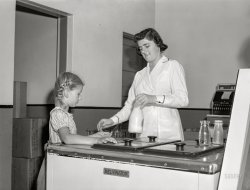
MAY CONTAIN NUTS

Search Shorpy
SHORPY ART

Framed or unframed, desk size to sofa size, printed by us in Arizona and Alabama since 2007. Explore now.
Join and Share
Ad-Free Shorpy
Shorpy is funded by you. Patreon contributors get an ad-free experience.
Learn more.

Recent comments
- Recent view
- Hudson’s Big Store
- Say what??
- Grapes?!
- A Beautiful Moment
- Such joy
- Bethune-Cookman University today...
- Yellow sky at morning
- Side Winder
- Air Quality?
- Sojourner Truth riot
- None were so blind(ed)
- The less famous sister
- Good ol' days?
- Rise and Fall
- Goo Goo Ga Joob
- Ticket Retention
- Not the only one
- Vagaries of War
- Killed by Amtrak
- Back to the Future
- Wanted --
- If you can't stand the light
- Centralized Traffic Control, I believe
- What's really happening
- Heckuva remote control!
- Sometimes — Things Go Bump!
- I SEE THE LIGHT
- Union Switch and Signal Company
- Get That Light Out Of My Eyes
Member Photos
The Shorpy
Print Emporium
Print Emporium
Search Shorpy
Search results -- 30 results per page
- Rainy Day People: 1943
- ... York, New York. Times Square on a rainy day." Photo by John Vachon for the Office of War Information. View full size.
Signs Read ... Posted by Dave - 06/21/2014 - 6:35pm -
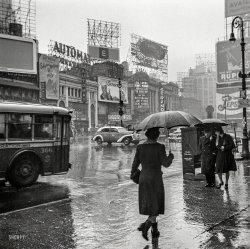
- Frosted Depot: 1941
- ... the vista last seen here. Medium format negative by John Vachon for the Farm Security Administration. View full size.
Quite a ... Posted by Dave - 02/19/2020 - 3:20pm -
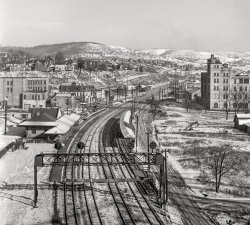
- Little Creek: 1938
- ... Delaware. A fishing village." Medium format negative by John Vachon. View full size.
A Rose by any other abbreviation According ... Posted by Dave - 08/13/2013 - 3:39pm -
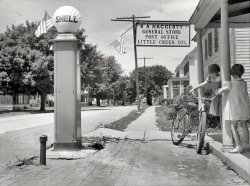
- Home Laundry: 1941
- ... Norfolk, Virginia." Medium format acetate negative by John Vachon for the Farm Security Administration. View full size.
It was a ... Posted by Dave - 02/11/2021 - 6:22pm -
![Home Laundry: 1941 March 1941. "Daughters of defense worker. Negro slum district. Norfolk, Virginia." Medium format acetate negative by John Vachon for the Farm Security Administration. View full size.
It was a hard lifebut she looks like a sweet and a good lady, with a precious little daughter. And not for nothing but I love the way Mom put her own outfit together. Very cool, right down to her socks and shoes. What she lacked in advantages she made up for in style savvy. As my own late mother would have said, that's no small thing.
[According to the caption, these ladies (the older last seen here) are sisters. - Dave]
So it does. Apologies for overlooking that.
Lots going onIt's great that something seems to be going on; we can use our imagination. Because her big sister is looking at her instead of the camera, little sister, incredibly cute, is the center of attention, and she is thinking big thoughts. I hope she's not in bad trouble. Of course good trouble would be ok.
Pre-washJudging by the smudges on the little girl, and the wash basin, and the cloth in the hands of the big girl, I’d say someone is about to get a bit of a wipe-clean. Which makes me think this photo is of a scene preparatory to the serious picture-taking, but somehow, in terms of quality and the moment captured, this is the photo that stuck. (Then I noticed the bunched-up garments on the spindles of the broken chair. Then I read the title again.)
Can we hurry up please?By the looks of the little girl’s legs and white socks, I’d say she was outside having a good time playing before being called in to be a part of the picture. Whenever I see kids in these pictures, I think they can’t wait to break free and get back to whatever game they were playing before they were interrupted.
(The Gallery, John Vachon, Kids, Kitchens etc., Norfolk)](https://www.shorpy.com/files/images/SHORPY-8c19060a.thumbnail.jpg)
- Country Living: 1940
- ... Monona County, Iowa." Medium format acetate negative by John Vachon for the Resettlement Administration. View full size.
I spy with ... Posted by Dave - 11/23/2019 - 2:11pm -
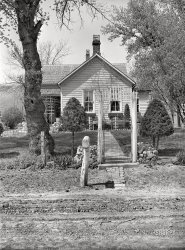
- Night Coach: 1941
- ... Little girl waiting." Medium format acetate negative by John Vachon. View full size.
I wish I knew I'm a novelist. I believe that ... Posted by Dave - 03/24/2020 - 11:24am -
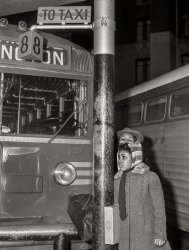
- So You Want to Get Married
- ... for the latest in titillating periodicals. Photo by John Vachon. View full size.
Well, Sonja Henie's tutu! It's Sonja ... Posted by Dave - 10/17/2013 - 12:49pm -
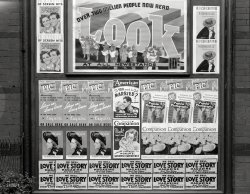
- The Big Cheese: 1941
- ... cheese factory in Madison, Wisconsin." Acetate negative by John Vachon for the Farm Security Administration. View full size.
... Posted by Dave - 02/27/2020 - 2:47pm -
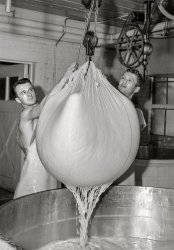
- A Light Lunch: 1941
- ... houses at Saginaw Farms, Michigan." Acetate negative by John Vachon. View full size.
(The Gallery, Agriculture, John Vachon, Kids) ... Posted by Dave - 03/31/2020 - 12:41pm -
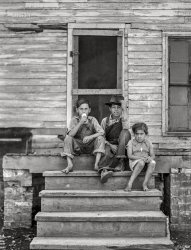
- Government Parking: 1939
- ... to make room for parking lot." Medium format negative by John Vachon. View full size.
Motor Meltdown Our car guys and gals will go ... Posted by Dave - 10/23/2019 - 8:39pm -
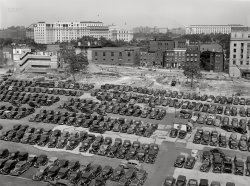
- Old Reliable: 1940
- ... of the jalopy we saw here . 35mm nitrate negative by John Vachon for the Farm Security Administration. View full size.
Red Crown ... Posted by Dave - 06/08/2012 - 11:01pm -
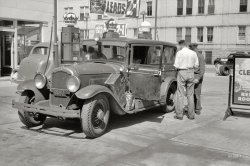
- Greenhills Gridders: 1939
- ... at Greenhills, Ohio." Medium format acetate negative by John Vachon for the Farm Security Administration. View full size.
The ... Posted by Dave - 04/17/2020 - 1:55pm -
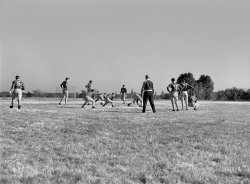
- Yesterday's Newsboys: 1943
- ... delivery boys." Medium format nitrate negative by John Vachon for the Office of War Information. View full size.
High & ... Posted by Dave - 03/24/2017 - 9:41am -
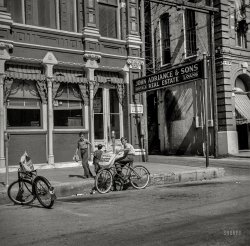
- The Plod Thickens: 1941
- ... sewer in Negro slum district. Norfolk, Virginia." Photo by John Vachon for the Farm Security Administration. View full size.
No ... Posted by Dave - 02/07/2018 - 11:15pm -
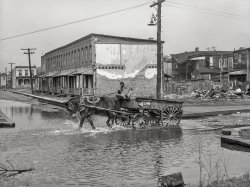
- Shady Pretty: 1941
- ... you're left with Elm St. Medium format acetate negative by John Vachon. View full size.
Alas, poor old stick Can you grieve the loss ... Posted by Dave - 03/29/2020 - 9:31pm -
![Shady Pretty: 1941 June 1941. "Residential section. Milwaukee, Wisconsin." Take the "tree" out of Elm Street and you're left with Elm St. Medium format acetate negative by John Vachon. View full size.
Alas, poor old stickCan you grieve the loss of something you never experienced?
Yes, yes you can.
Still rememberMy grandparents lived on a street very much like this in Milwaukee. I was very young, but remember the crews working their way up the street cutting down the remains of all the dead elms.
Like Elm Streets everywhereTake the elms out of Elm St. and you have sad reality.
IdealThat's about as "ideal America" as it gets.
A Vague MemoryI was born in 1952 and do remember trees like this along the main street in my Ohio hometown. Was still pretty young so I don't remember too much about them going away. Just know that they are now long gone.
Dutch elm diseaseAll over the northeast, elm trees were killed by this disease. when I was in elementary school in the 1940s, there was extensive spraying to kill the bark beetle that carried the disease fungus, but it was futile. Scenes like this do not exist today. Occasionally, in rural areas one will see a beautiful "fountain elm" standing, only because it's too far for the elm bark beetle to reach. Many of my generation remember the elms and miss them.
Elm StreetMy hometown looked like that picture but by the mid 70's all of the elms were dead or dying thanks to Dutch Elm disease.
Before the Dutch Elm virusBefore Dutch Elm disease ravaged them, all Midwestern cities had streets like this lined with elms, including my home town, Moline, Illinois. By 1980, most of the elms were gone.
My point was not that Dutch elm disease was caused by a virus; I know it's a fungus. The fungus blocks the 'veins' of the tree that deliver water and nutrients. I was comparing it to the corona virus. I'm sorry I wasn't clear.
[D.E.D. is caused by a fungus, not a virus. - Dave]
BandsMost of these trees have a dark band a couple of inches wide, about 6 feet above ground-level. Not all are the same height, but it looks like they are all the same height at any one home. Anyone have any idea what these are?
[Insect barrier. - Dave]
Pre-emptive measuresWhen I was a kid, in the sixties, the local authorities in the cottage community where we spent our summers decided to cut down every elm in an over-zealous bid to nip this Dutch Elm thing in the bud, so to speak. All the elms on all the boulevards were cut down, leaving behind vacant vistas and strange weirdness. My mom was a tough bird brought up in the Depression, and I was surprised and not a little afraid at how upset she got.
The Old College TreeOne of the things I've cherished about my 40 year stay in Hanover, NH, is the grandeur of the disease resistant elms that remain in remarkable numbers on the Dartmouth College campus. You don't have them in rows like in this picture anymore, but you have some amazing samples dotted around campus. I stop and admire them almost every day. There's something about the interweave of the branches in the canopy that fascinates me.
(The Gallery, John Vachon, Milwaukee)](https://www.shorpy.com/files/images/SHORPY-8c19659a.thumbnail.jpg)
- Meet Mrs. Ash: 1941
- ... of Detroit, Michigan." Medium format acetate negative by John Vachon for the Farm Security Administration. View full size.
The Egg ... Posted by Dave - 03/05/2020 - 1:50pm -
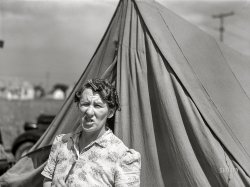
- The Pig and I: 1940
- ... cold storage lockers. Casselton, North Dakota." Photo by John Vachon for the Farm Security Administration. View full size.
Hand-drawn ... Posted by Dave - 12/27/2019 - 6:23pm -
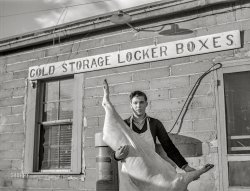
- Corpus Christi: 1943
- ... Christi, Texas." The Ascension. Medium format negative by John Vachon for the Office of War Information. View full size.
There's ... Posted by Dave - 12/05/2013 - 10:29am -
![Corpus Christi: 1943 June 1943. "Corpus Christi, Texas." The Ascension. Medium format negative by John Vachon for the Office of War Information. View full size.
There's a Red Flying Horse By the Road SideI saw this picture and the line above from the Kevin Welch song "Early Summer Rain" immediately popped into my head. He also has a nice story about memories of the red flying horse on his Blawg. I also have childhood memories of the red flying Pegasus above Mobil stations but they are much fuzzier.
Still ascending over DallasThe pegasus was originally the logo of the Dallas-based Magnolia Oil Company, which became part of Mobil Oil through a merger in 1959.
A renovated version of the logo "flies" atop the Magnolia Hotel in Dallas. A history can be found here: http://www.magnoliahotels.com/pdf/pegasus-article-121211.pdf
Escape from the mundaneThis is a classic photographic composition in my opinion, a study in stark contrasts, which includes a narrative: Earth and sky, dark and light, the simplicity of life, and the dream of winged escape from the mundane.
I'd recognize that shadow anywhere.Having pumped Ethyl as a wee lad, I wore the Mobil Pegasus on my chest while doing so.
Dave's Mobil in Blue Springs, Missouri.
Somebody knows, but I don'tWhat's the hoopy thing?
[A stand to hold a round sign, like those here and here. -tterrace]
Two thingsTwo things about this photo strike a chord with me. In 1969 (when I was nine) a had surgery at Parkland Hospital in Dallas. There was a Pegasus, perhaps the one in kirkbrewer's post, outside my window. I loved looking at it, especially at night. We moved to Corpus when I as a teenager and I lived there until I joined the Navy in 1982 (I haven't been back since, except for short visits). There's not a lot in this photo from which I can get my bearings, but it sure is as flat and nondescript as I remember.
(The Gallery, Gas Stations, Horses, John Vachon)](https://www.shorpy.com/files/images/SHORPY_8d31645a.thumbnail.jpg)
- The Stag: 1938
- ... "Flophouse on lower Douglas Street." 35mm negative by John Vachon for the Resettlement Administration. View full size.
... a pretty good upgrade for a nickel!
(The Gallery, John Vachon, Omaha) ... Posted by Dave - 08/02/2017 - 9:25am -
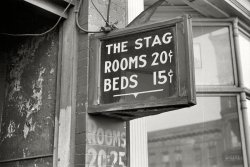
- Spensley Orpheum: 1940
- ... and Viva Cisco Kid. Medium format acetate negative by John Vachon. View full size.
Still there At the intersection of Main and ... Posted by Dave - 04/17/2020 - 3:10pm -
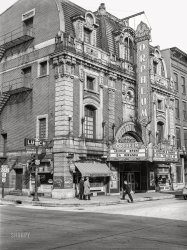
- Bank Shot: 1940
- ... poolroom. View full size. 35mm nitrate negative by John Vachon for the Farm Security Administration.
(The Gallery, John Vachon, Sports) ... Posted by Dave - 12/28/2007 - 12:31pm -
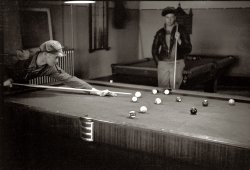
- The Sweet By and By: 1938
- ... and graveyard. Dover, Delaware." Medium format negative by John Vachon for the Farm Security Administration. View full size.
Raising ... Posted by Dave - 03/08/2018 - 11:12am -
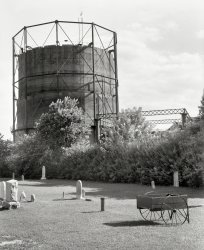
- Berrien Cherriers: 1940
- ... Michigan." View full size. 35mm nitrate negative by John Vachon for the FSA.
Tag "G" could be for gasoline. Maybe they were ... Posted by Dave - 01/11/2008 - 1:12am -
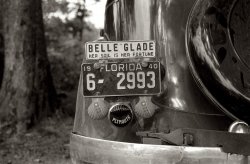
- I'm E.Z.: 1941
- ... Allouez, Wisconsin." Medium format acetate negative by John Vachon for the Farm Security Administration. View full size.
Come here ... Posted by Dave - 03/10/2020 - 2:35pm -
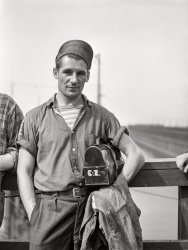
- 99 Bottles: 1938
- ... singer last seen here . Medium format negative by John Vachon for the Resettlement Administration. View full size.
The old ... Posted by Dave - 08/02/2017 - 11:44am -
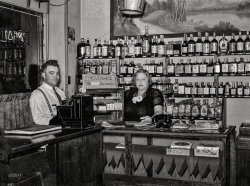
- Pittsburgh Panorama: 1941
- ... Pennsylvania." Medium format acetate negative by John Vachon for the Farm Security Administration. View full size.
Look out ... Posted by Dave - 06/11/2020 - 10:21am -
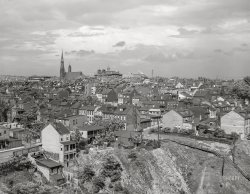
- Skid Row: 1938
- ... of the hobo centers of the West." 35mm nitrate negative by John Vachon. View full size.
(The Gallery, Great Depression, John Vachon, ... Posted by Dave - 08/02/2017 - 9:22am -
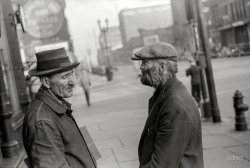
- Omaha Suds: 1938
- ... South Omaha, Nebraska." Medium format negative by John Vachon. View full size.
Cornice symbolism?
Is the emblem on the ... Posted by Dave - 09/09/2017 - 6:46pm -
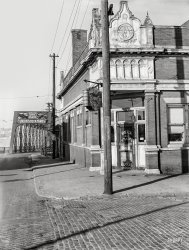
- Service Man: 1940
- ... Millburg, Michigan." Medium format acetate negative by John Vachon for the Farm Security Administration. View full size.
I’m from ... Posted by Dave - 12/27/2019 - 2:34pm -
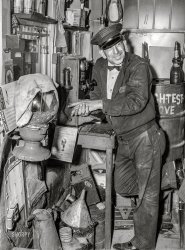
- Milk & Honeys: 1941
- ... Duluth, Minnesota." Medium format acetate negative by John Vachon for the Farm Security Administration. View full size.
Collecting ... Posted by Dave - 03/19/2020 - 12:53pm -
